Hunza Valley
Hunza Valley is a mountainous valley in Gilgit in the Gilgit-Baltistan autonomous region, an area under the control of the government of Pakistan. Hunza Valley is a mountainous area in Gilgit Baltistan, Pakistan. Hunza was formerly a princely state, bordering China to the north-east and Pamir to its northwest, which survived until 1974, when it was dissolved by Zulfikar Ali Bhutto. The state bordered the Gilgit Agency to the south, the former princely state of Nagar to the east. The state capital was the town of Baltit (also known asKarimabad) and its old settlement is Ganish Village. Hunza was an independent principality for more than 900 years. The British gained control of Hunza and the neighbouring valley of Nagar between 1889 and 1892 followed by a military engagement of severe intensity. The then Thom (Prince) Mir Safdar Ali Khan of Hunza fled to Kashghar in China and sought what can be called political asylum.
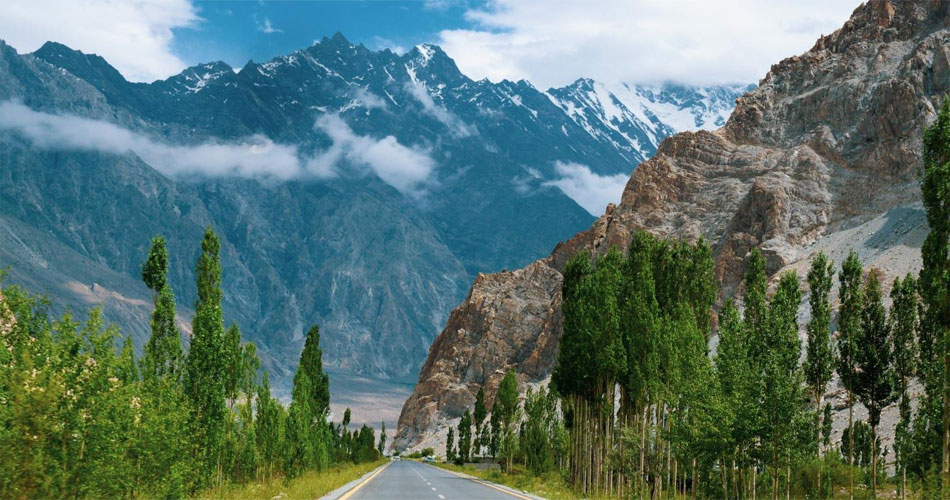
The ruling family of Hunza is called Ayeshe (heavenly), from the following circumstance. The two states of Hunza and Nagar were formerly one, ruled by a branch of the Shahreis, the ruling family of Gilgit, whose seat of government was Nagar. Tradition relates that Mayroo Khan, apparently the first Muslim Thum ofNagar some 200 years after the introduction of the religion of Islam to Gilgit, married a daughter of Trakhan of Gilgit, who bore him twin sons named Moghlot and Girkis. From the former the present ruling family of Nager is descended. The twins are said to have shown hostility to one another from birth. Their father seeing this and unable to settle the question of succession, divided his state between them, giving to Girkis the north, and to Moghlot the south, bank of the river. The visitors to Hunza are overwhelmed by the rugged charm, the fragrant breeze singing through graceful poplar trees and the velvet-like green carpet of wheat fields, set against the background of snow-covered mountains.The magnificent Hunza Valley has had people like me waxing lyrical for centuries. Known for its epic mountain views, the longevity of its residents and its apricots, it was here that James Hilton set his Shangri La in the novel Lost Horizons. And a very special place it is, too.The people of Hunza have a saying, ‘A house without a view is like a house without a roof,’ pretty useless in other words and from pretty much anywhere in the valley, looking in pretty much any direction, you will be privy to a stunning view.
Attabad Lake, Hunza Vally
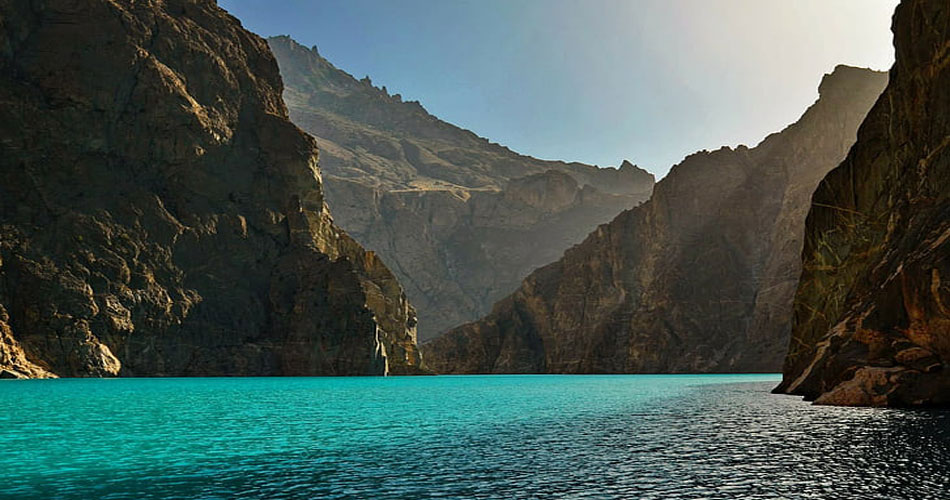
Attabad Lake is located in the Gojal Valley, Hunza, Gilgit Baltistan, Pakistan. The lake is 14Km long, it was born after a natural disaster in Attabad village. This Lake is full of chilly blue water, which slit into the lake from nearby glaciers and from the Hunza river. It was created in January 2010 as the result of a major landslide in Attabad.It was created in January 2010 as the result of a major landslide in Attabad. The lake has become one of the biggest tourist attractions in Gilgit−Baltistan, offering activities like boating, jet-skiing, fishing and other recreational activities.Attabad lake shrinking rapidly, the artificial lake decreased in last two years, experts says the the flow of Hunza river eroded the spillway, if the speed continues, water from the lake will discharge completely in next few years.Attabad Lake has beautiful turquoise blue water. It is a14 km long and a narrow lake that basically follows the alignment of Hunza River.The shimmering turquoise lake of Attabad is one of the most famous tourist attractions in the Gilgit Baltistan region. Visitors come to experience the stunning view of the landscape, and enjoy many recreational activities on and around the lake, such as boating, jet skiing etc. Increased tourist flow provided many opportunities for the locals as they opened hotels, and guesthouses around the lake.
Rakaposhi view point, Hunza Valley
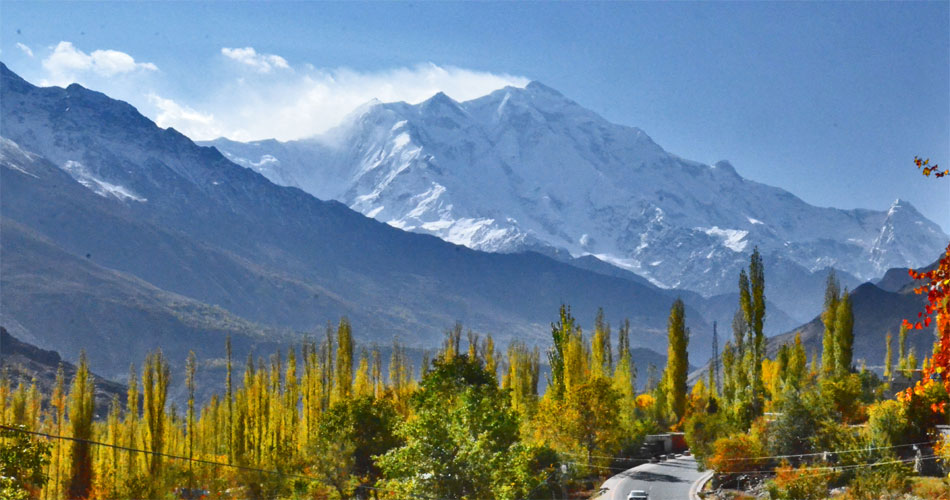
Rakaposhi is a mountain peak in the Karakoram Range in northern Kashmir (25,560 feet high) example of: mountain peak. the summit of a mountain.Rakaposhi is the only mountain in the world with more than 5,000 meters height between base camp and the summit; by contrast all of the other tallest mountains in the world have less than 5,000 meters from base camp to top.Beautiful snow covered Rakaposhi peak peaking through the clouds and snow shining with sunlight is a breath taking view. Clean fresh and cold water stream from the glacier makes it even better. There is a small cafe which serves hot herbal teas. You can sit and enjoy the beautiful view while sipping your hot cup of tea. Feels like heaven on earth!Rakaposhi peak mountain, a 7788 meter-high peak, which is the 27th highest mountain on Earth but considered one of the most beautiful ones. The cold water splasing from the melted glacier of the Rakaposhi Mountain falls into the Gilgit river. A number of shops are on both sides.
Hussaini Bridge, Hunza Valley
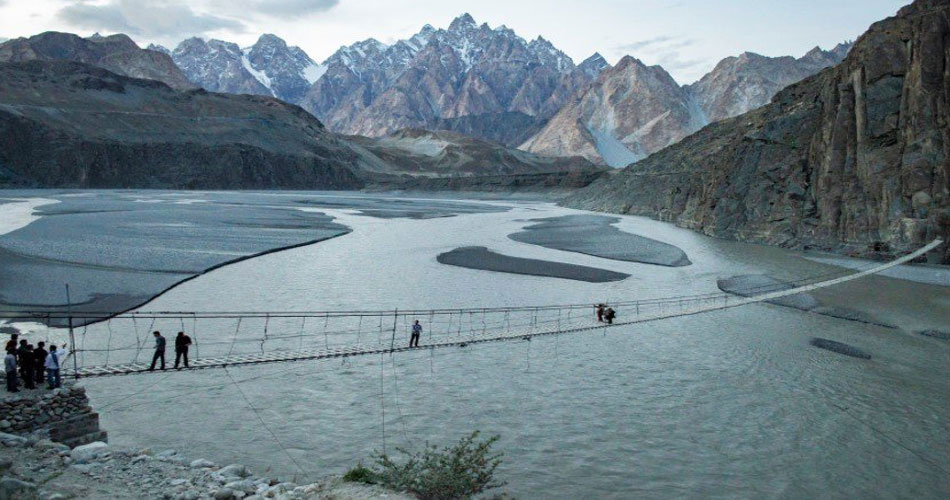
The bridge was built during the time of British occupation of the valley in Shishkat village in Gojal Valley, however, during the construction of the Karakoram Highway, the bridge was moved from Shishkat to Hussaini Village in 1968 as ordered by the Mir of Hunza Muhammad Jamal Khan to connect Hussaini village to Zar Abad village located on the opposite side of the river Borit.Hussaini Hanging Bridge is a relatively new addition to the attractions of Hunza. The community has constructed it after a flood washed away their old bridge.This is Known as the most dangerous bridge in the world, the Hussaini Hanging Bridge is only one of many precarious rope bridges in Northern Pakistan.Where the world has moved to new technological advancements for facilitating commute between different regions it is becoming hard to imagine anything less than Space flights or Super jets to be used in today’s world however in the Upper Hunza region of Gilgit Baltistan the inter-region remains as difficult as it was a hundred years ago. Hussaini Hanging Bridge to cross the Borit River is an example of such a commute but has become a famous tourist attraction.
Passu Cathedral, Hunza valley
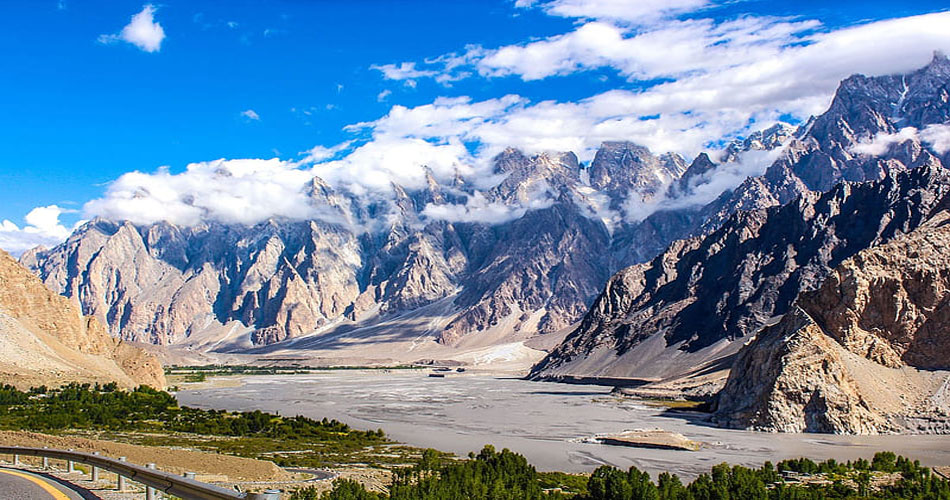
The Passu Cathedral is located near the Khunjerab border between Pakistan and China in upper Hunza, about 50kms from central Hunza valley, and some 150kms from Gilgit town. The elegant mountains can be seen from Attabad Lake while driving along the Karakoram Highway.Passu Cathedral, also known as the Tupopdan Peaks or Passu Cones, is located at the altitude of 20,033 feet in Passu village on Karakoram Highway near the Hunza River. It is the most beautiful picturesque peak in Gilgit-Baltistan. It is worth staying here to get the beauty of this town in the high mountains before moving toward the Khunjerab Pass.Passu Cones are visible from the Karakoram Highway, it is one of the most beautiful group peaks and you will get its beautiful sight just from Karakoram Highway.
Go Back To HomePackage Detail
(BY ROAD)
Enjoy your 8 days Trip from Islamabad to Hunza valley by Road with Yashroon International.
The average cost can range from PKR 75,000 to PKR 95,000 per person depending on whether you are looking for a luxury arrangement, a leisure long-stay trip with your significant other. you will find in this cost.